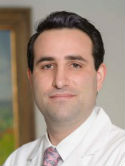Expert strategies: Skull base reconstruction—Global perspectives, insights, and algorithms through a mixed methods approach Journal Article
| Authors: | Kuan, E. C.; Talati, V.; Patel, J. A.; Nguyen, T. V.; Abiri, A.; Pang, J. C.; Goshtasbi, K.; Liu, L.; Craig, J. R.; Papagiannopoulos, P.; Phillips, K. M.; Tajudeen, B. A.; Adappa, N. D.; Palmer, J. N.; Sedaghat, A. R.; Wang, E. W.; Anand, V.; Batra, P. S.; Bergsneider, M.; Bernal-Sprekelsen, M.; Bleier, B. S.; Cappabianca, P.; Carrau, R. L.; Casiano, R. R.; Castelnuovo, P.; Cavallo, L. M.; Cohen, M. A.; Dallan, I.; Eloy, J. A.; El-Sayed, I. H.; Evans, J. J.; Fernandez-Miranda, J. C.; Ferrari, M.; Froelich, S.; Gardner, P. A.; Georgalas, C.; Gray, S. T.; Hanna, E. Y.; Harvey, R. J.; Hong, S. D.; Hwang, P. H.; Kelly, D. F.; Kong, D. S.; Lan, M. Y.; Lee, J. Y. K.; Levine, C. G.; Liu, J. K.; Locatelli, D.; Meço, C.; McKean, E. L.; Nicolai, P.; Nyquist, G. G.; Omura, K.; Passeri, T.; Patel, Z. M.; Celda, M. P.; Neto, C. P.; Prevedello, D. M.; Rabinowitz, M. R.; Raza, S. M.; Recinos, P. F.; Rosen, M. R.; Sargi, Z. B.; Schlosser, R. J.; Schwartz, T. H.; Sindwani, R.; Snyderman, C. H.; Stamm, A. C.; Thorp, B. D.; Turri-Zanoni, M.; Wang, M. B.; Wang, W. H.; Witterick, I. J.; Won, T. B.; Woodworth, B. A.; Wormald, P. J.; Zada, G.; Su, S. Y. |
| Article Title: | Expert strategies: Skull base reconstruction—Global perspectives, insights, and algorithms through a mixed methods approach |
| Abstract: | Objective: There is limited consensus on endoscopic skull base surgery (ESBS) reconstruction principles. This study aims to generate comprehensive themes regarding ESBS reconstruction by pooling the experiences of ESBS experts, with comparison to a literature review of current published evidence. Methods: Structured qualitative interviews of ESBS experts regarding postoperative management and reconstruction of various defect locations were conducted. Results: A total of 68 experts comprising 40 academic teams across 13 countries with an average of 18 years of ESBS experience were included. We propose 10 stepwise algorithms for common skull base reconstruction scenarios based on these expert interviews. When available, the nasoseptal flap is used for all high_flow cerebrospinal leak defects. Multilayered reconstruction is favored at all anatomical subsites with increasing number of layers for increasing defect size and complexity. Heterogeneity exists in terms of inlay technique and materials, free grafting versus various pedicled flap options for low-flow defects or in the absence of a nasal septum, nasal packing, tissue sealant, lumbar drain use, and postoperative management. Commonalities and discrepancies between experts were summarized. Conclusion: Skull base reconstruction and post-ESBS management is highly complex with a wide variety of practice patterns and expert strategies. Further research of higher quality evidence is warranted to identify optimal management patterns, though the current work aims to inform surgeons on these controversial areas by drawing from numerous experiences. © 2025 The Author(s). International Forum of Allergy & Rhinology published by Wiley Periodicals LLC on behalf of American Academy of Otolaryngic Allergy and American Rhinologic Society. |
| Keywords: | suprasellar; skull base reconstruction; anterior cranial fossa; encephalocele; sella; cerebrospinal fluid leak; csf leak repair; expert algorithms; posterior cranial fossa; postoperative precautions |
| Journal Title: | International Forum of Allergy and Rhinology |
| ISSN: | 2042-6976 |
| Publisher: | Wiley Blackwell |
| Publication status: | Online ahead of print |
| Date Published: | 2025-05-15 |
| Online Publication Date: | 2025-05-15 |
| Start Page: | e23596 |
| Language: | English |
| DOI: | 10.1002/alr.23596 |
| PROVIDER: | scopus |
| PUBMED: | 40371737 |
| DOI/URL: | |
| Notes: | Article -- Source: Scopus |



